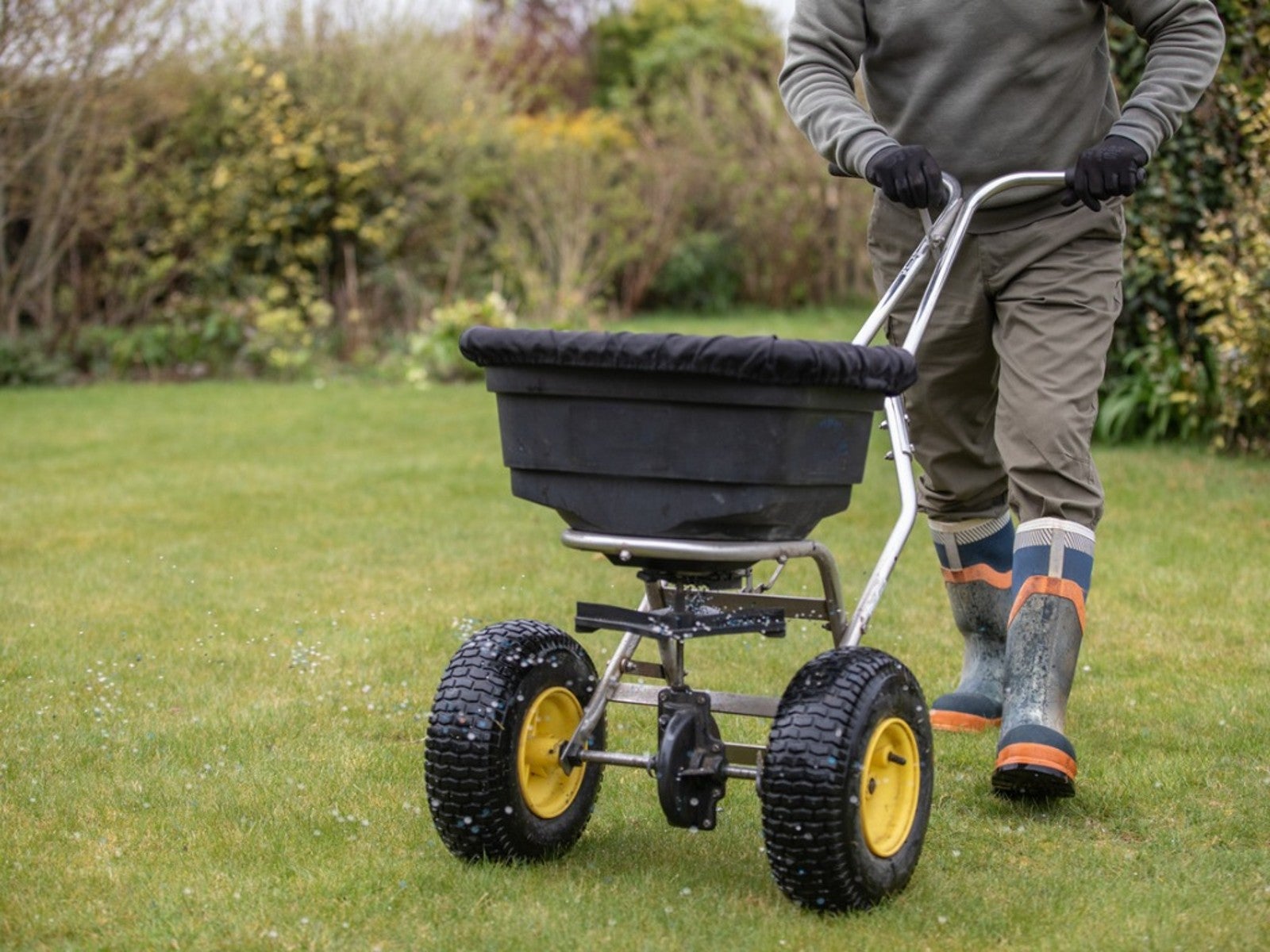Fertilize Grass In Fall For A Lush Lawn In Spring
Fertilizing your lawn in the fall automatically sets it up for success in the spring.


Summer sun and fun takes it out of your grassy backyard. That’s why fall lawn fertilizer is a must if you want healthy grass. Fertilizing your lawn in fall will repair summer damage and help those little grass plants to build up reserves to get them through the winter.
If you're looking for basic information on fertilizing lawn care in autumn, you'll find it here. Fall lawn fertilization is no more difficult than feeding the grass in springtime. It’s just a question of offering your lawn the right nutrients at the right time.
Benefits of Fall Lawn Fertilizing
You may have heard that the best time for fertilizing the grass is right before it begins its growing season. While it’s true that nutrients in spring give the lawn a boost to grow, don’t underestimate the benefits of fertilizing lawns in fall.
Keep in mind that turfgrasses fall into two basic categories: warm-season and cool-season grass. Warm season grasses thrive and grow during the warm days of summer and fall, then go dormant in late fall or winter. Cool season grasses have the opposite schedule. They thrive during cool weather like spring and autumn but die back in the heat of summer unless watered well.
As summer slips into fall, warm season grasses (like bahiagrass, bermudagrass, and St. Augustine grass) are in the final chapter of a busy growth season. You can fertilize these lawns at any point during their growing season, and applying light fertilizer in early fall helps them wrap up the warm season strong and healthy.
Cool-season grasses (like fescue and Kentucky bluegrass) can go dormant during summer heat, then start growing when the weather cools. Late fall fertilizer assists the lawn during the autumn growth spurt.
Fall lawn fertilizing is important because the nutrients help the grass root system develop. The more established the root system, the less weeds will be able to squeeze in between them. In addition, strong grass roots also mean a quicker rebound in spring.
Sign up for the Gardening Know How newsletter today and receive a free copy of our e-book "How to Grow Delicious Tomatoes".
When to Fertilize Lawns in Fall
The optimal period for fertilizing lawns in autumn varies between types of turfgrass.
- Warm-season grasses benefit from a light application of a balanced fertilizer in early September. In regions that have truly warm winters like south Florida, you can even schedule this feeding for October.
- Feed cool-season turfgrass in any month in autumn. That means you can fertilize in September, October, or November. Aim for an application between six and eight weeks after the summer application. Mid-October is said to be the optimal time, but that depends on your region. You’ll want to apply fall fertilizer several weeks before the ground freezes.
Best Fall Lawn Fertilizers
Plant fertilizer is labeled with an NPK formula, three numbers showing the ratio of nitrogen (N), phosphorus (P) and potassium (K) in the fertilizer. Use a high-nitrogen fertilizer on cool-season grass in fall, like 20-8-8 or 24-0-12. Nitrogen is the ingredient that promotes leaf and stem growth. Greenview Fall Lawn Food on Amazonand Scotts Turf Builder Winterguard are both good options.
For warm-season grasses, pick a phosphorus-heavy fertilizer, often sold as winter or fall fertilizer. Phosphorus is known to push root growth, not blade growth. By fall, warm season grasses have already done the bulk of their growing for the year, so nitrogen fertilizer is not helpful and can even be harmful. Try this High Phosphorous fertilizer from Lawn Synergy.
If you want to go organic, there's Fall Fix from Lawn Box on Amazon.
Tips for Fall Lawn Fertilizing
Here are some things to keep in mind as you fertilize in fall:
- Know before you grow!
- Figure out your type of turfgrass and its primary growing season. Also get a good handle on when winter rolls in, the first frost date and the first freeze date.
- Look out for cold weather.
- Never fertilize when the thermometer dips below freezing temperatures or when the ground is frozen.
- Try fall or winter fertilizer - These types of fertilizer are made to push root growth rather than blade growth.
- Fertilizer is not one-size-fits-all!
- Different plants need different nutrients, so don’t fertilize other plants with lawn fertilizer.

Teo Spengler is a master gardener and a docent at the San Francisco Botanical Garden, where she hosts public tours. She has studied horticulture and written about nature, trees, plants, and gardening for more than two decades, following a career as an attorney and legal writer. Her extended family includes some 30 houseplants and hundreds of outdoor plants, including 250 trees, which are her main passion. Spengler currently splits her life between San Francisco and the French Basque Country, though she was raised in Alaska, giving her experience of gardening in a range of climates.